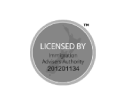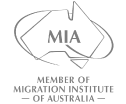Financial capacity proof—colloquially known as “show money”—is a critical component of Australian visa applications, ensuring migrants can support themselves and dependents without public assistance. For skilled professionals pursuing visas like the TSS (Subclass 482) or ENS (Subclass 186), requirements hinge on salary thresholds, dependents, and documentation rigor. Effective July 2025, skilled migration pathways face significant income threshold revisions, necessitating strategic preparation. This guide demystifies Australia’s financial proof standards, leveraging updated policies and actionable strategies.
Understanding Australia’s Financial Capacity Framework
Core Income Thresholds for Skilled Visas
Australia employs three primary income benchmarks for skilled migration:
| Threshold | 2024–2025 Value | Purpose |
|---|---|---|
| Temporary Skilled Migration Income Threshold (TSMIT) | AUD $73,150 | Minimum salary for temporary skilled workers (e.g., TSS visa) |
| Core Skills Income Threshold (CSIT) | AUD $70,000 | Baseline for occupations under the Core Skills pathway |
| Specialist Skills Income Threshold (SSIT) | AUD $135,000 | Applies to highly specialized roles (e.g., tech executives, senior academics) |
Note: From 1 July 2025, these thresholds rise by 4.6%, aligning with wage growth metrics[1][3]. Applications lodged before this date follow current values.
Why Proof of Funds Matters
- Risk Mitigation: Australia mandates financial proof to ensure migrants cover living costs without state support[2][4].
- Labor Market Integrity: Thresholds prevent undercutting local wages and ensure skilled roles meet economic needs[3].
- Dependency Coverage: Visa holders supporting family members must demonstrate funds for additional living expenses[2].
Visa-Specific Financial Requirements
1. Temporary Skill Shortage Visa (Subclass 482)
- Proof Type: Employment contracts or bank statements showing salary meets/exceeds TSMIT.
- Dependents: Add AUD $7,362 per spouse and AUD $3,152 per child annually[2].
- Post-July 2025: Salary must satisfy the revised TSMIT and the Annual Market Salary Rate (AMSR)[1].
2. Employer Nomination Scheme (Subclass 186)
- Permanent Residency Pathway: Requires salary exceeding the CSIT/SSIT (depending on role) and AMSR[3].
- Post-July 2025: Nominees must clear the adjusted thresholds immediately upon effect[1].
3. Student Visas (Relevant for Dependents)
Though not primary skilled visas, accompanying family members under student streams require:
- Single Applicant: AUD $24,505 annually[2][4].
- Per Dependent: Additional AUD $7,362 (spouse) or AUD $3,152 (child)[4].
Documenting Proof of Funds: A Step-by-Step Guide
Essential Documentation
- Bank Statements: Show liquid assets for ≥3 months with consistent balances covering required amounts.
- Employment Contracts: Valid for TSS/ENS visas, confirming salary meets thresholds[1][3].
- Sponsorship Letters: If funded by employers or relatives, include notarized commitments.
- Asset Proof: Property deeds or fixed deposits indicating convertible wealth[4].
Strategic Preparation for 2025 Threshold Hikes
- Early Lodgment: Submit applications before 1 July 2025 to lock in current thresholds[1].
- Salary Negotiation: Recalibrate employment terms with sponsors to meet new TSMIT/CSIT values.
- Contingency Buffers: Maintain 15–20% above minimums to accommodate currency or policy fluctuations.
Common Pitfalls and Mitigation Tactics
- Threshold Non-Compliance: 54% of refusals stem from salaries below AMSR or outdated thresholds[1]. Solution: Use the Fair Work Ombudsman Calculator to benchmark roles.
- Inconsistent Documentation: Discrepancies between bank statements and declared sources trigger audits. Solution: Annotate large deposits with verifiable origins (e.g., property sale deeds).
- Post-Arrival Liquidity: Maintain accessible funds for initial settlement costs (e.g., rentals, deposits).
Navigating Future Changes
Australia’s skilled migration program increasingly prioritizes salary transparency and labor market alignment. Professionals should:
- Monitor Home Affairs’ Threshold Updates biannually.
- Engage registered migration agents for AMSR assessments ahead of renewals or new applications[1][3].
Financial proof is not merely bureaucratic—it’s strategic groundwork for sustainable migration. By aligning income, documentation, and timing with policy shifts, skilled applicants transform regulatory hurdles into confident pathways toward Australian residency.










